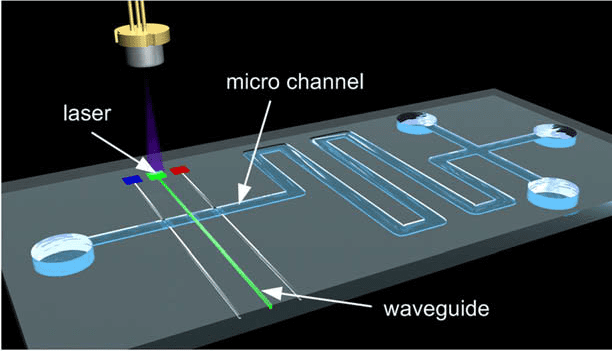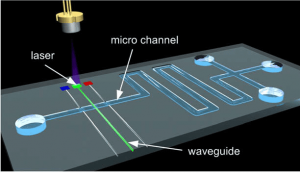Solid-state organic amplifiers and lasers have evolved into attractive buildings blocks for on-chip integration. They offer low-cost and simple processing combined with high performance.
Over the past two decades, organic gain media have shown great potential for use in different photonic devices, and rapid progress has been made in the development of efficient light-emitting sources, including lasers and optical amplifiers. Early reports on organic lasers were of gain media, usually fluorescent dyes, in solutions; however, due to the need for developing sources that could be integrated with different applications, research in this field has gradually extended to solid-state coherent light sources. Organic gain media that have been successfully used for development of solid-state lasers and amplifiers fall under four broad categories: dye-doped polymers, organic semiconductors, rare-earth ion doped polymers, and liquid crystals.
Advances in the gain medium design and synthesis in combination with new resonator architectures has led to tremendous improvements. A number of operating characteristics including low thresholds, capability of tunable emission over broad spectral ranges, generation of pulses with short duration and modest energies, as well as broadband amplification have made solid-state organic lasers and amplifiers the subject of great scientific and technological interest in recent years. Such sources are very attractive for integrated photonic applications by virtue of their low-cost and simple processing, and compatibility with a large number of material platforms and the CMOS processing technology. These features allow for easier on-chip integration with optical and electronic functionalities compared to their counterparts based on other gain materials.
In a review article, Christos Grivas and Markus Pollnau from the University of Twente (The Netherlands) give an overview of the current state-of-the-art in the field of organic solid-state amplifiers and lasers. They report about important aspects of fabrication technology, gain materials, and device performance. The authors also highlight examples of the progress of this technology from a laboratory curiosity to one that demonstrates practical integrated photonic applications. They provide an outlook on research areas and applications that are likely to shape further developments of this technology.


















